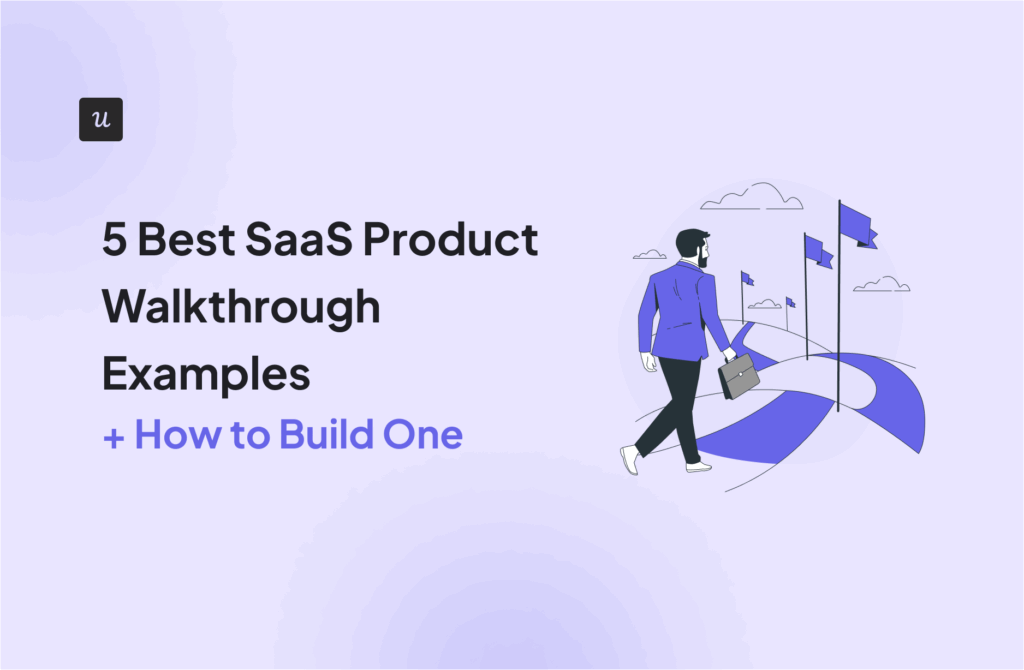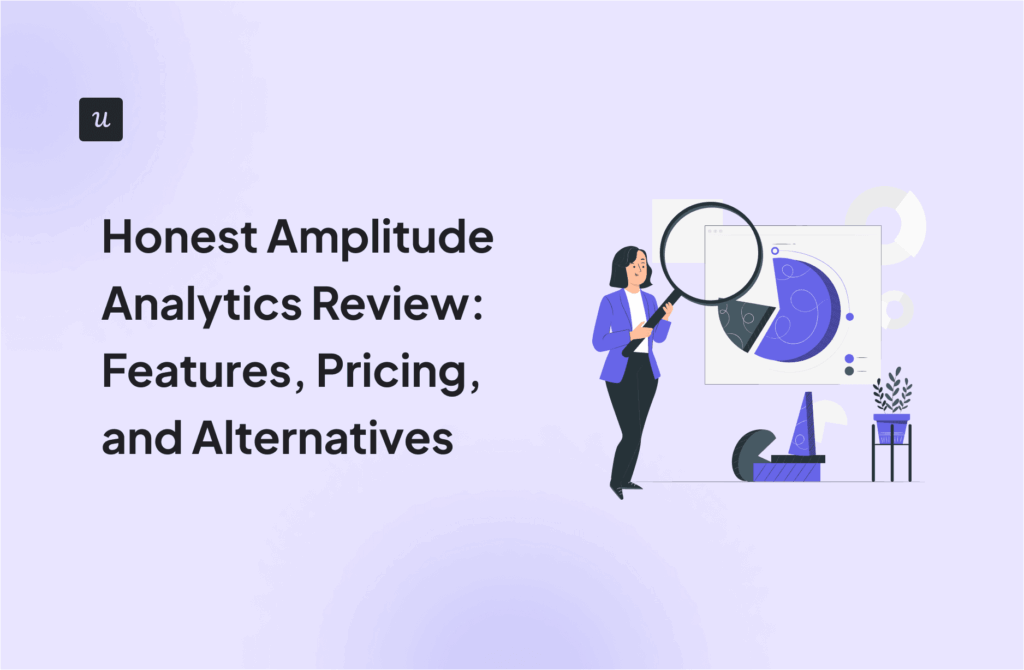
Behavioral Segmentation in SaaS: What is It and Why Should You Care?
What’s the role of behavioral segmentation?
SaaS companies often segment users based on their age, gender, and other demographic attributes but is that really the best way to go about it? Surely segmenting based on customer behavior will yield the best results for your marketing efforts.
In this article, we’re going to go over how using behavioral segmentation can boost customer lifetime value, grow your customer base, and increase brand loyalty through more contextual communication with your users!
Get The Insights!
The fastest way to learn about Product Growth, Management & Trends.
Summary of behavioral segmentation
- Behavioral segmentation is a strategy of grouping customers based on how they interact with your product.
- Behavioral segmentation differs from demographic segmentation in that you segment customers based on behavior data instead of attributes like age, gender, occupation, etc.
- There are many types of behavioral segmentation based on the user journey, engagement, loyalty, satisfaction, and JTBD.
- Tailored onboarding, product feedback, feature adoption, freemium conversion rates, and churn reduction are just a few applications for behavioral segmentation.
- Using behavioral segmentation to identify the most valuable features of your product can boost LTV, retention, and expansion revenue.
- Behavioral segmentation is most effective when combined with personalization marketing that can utilize that data.
- Behavioral segmentation is all about quality over quantity so exclude irrelevant data like personal occasions and focus on the metrics that affect revenue or KPIs.
- Userpilot provides advanced in-app behavioral segmentation so you can communicate with your users in a more contextual way and increase product adoption. Book a demo today.
What is behavioral segmentation?
Behavioral segmentation is a strategy where you segment customers based on behavioral data instead of demographic traits.
This method of customer segmentation helps you factor in how they interact with your business and what factors may influence their buying process in the future.
Behavioral segmentation vs. demographic segmentation
Most of us who have worked on marketing campaigns are familiar with demographic and geographic data segmentation as it helps you target customers interested (potentially) in your product or service.
That said, segmenting customers based on their past behavior can actually be a more effective marketing strategy.
Here are the key differences between the two:
- Demographic segmentation: looking at the demographics of your customer base can yield valuable insights into who your ideal target audience is.
- Behavioral segmentation: analyzing historical behavioral patterns can be a superior segmentation strategy if your goal is to improve the in-app experience and promote customer expansion.
In essence, going beyond traits and into customer behavior is essential to improving adoption, retention, and conversion.
Why is behavioral segmentation important?
There are many benefits to customer segmentation based on behavior patterns.
Let’s take a look at four advantages that you’ll achieve when you use behavioral segmentation.
Personalize onboarding and in-app interactions based on different needs
Tailoring in-app interactions can be tricky if you’re relying solely on demographic attributes and traits. However, adding a customer’s behavior into the mix helps you send the right offers to the right users at the right time.
Looking at behavioral patterns can shed light on how the most valuable customers engage with your product, making it easier to create targeted messaging and reach them through their preferred medium.
In the end, you’ll not only get a deeper understanding of their purchasing behavior but will also get the behavioral data needed to streamline their customer journey.
For instance, imagine a project manager signs up for your platform but most of the onboarding flow focuses on accounting features.
A one-size-fits-all product tour isn’t targeted enough to focus on the benefits sought out by the user when they first signed up.
In contrast, taking a contextual onboarding approach ensures that the customer journey always remains relevant to their needs and jobs-to-be-done.
A great way to start would be to have a survey on your welcome screen that segments users based on their roles. This makes it possible to focus on the features they’ll actually use leading to faster user activation and product adoption.

Predict future customer behavior and outcomes based on behavioral patterns
Customer behavior is one of the most reliable sources of data when it comes to understanding a user’s purchasing process, predicting their future usage behavior, and influencing the outcomes as they use your product or service.
For example, you could segment customers with heavy usage behavior, cross-reference that with product analytics, and identify which features they engage with the most outside your product’s core function.
Once you figure out which features your most engaged customers use, you can craft your marketing strategy around showcasing them to drive feature adoption amongst light users.
Behavioral data and cohort analysis can also help you find the reasons why existing heavy or light users churn.
Using a tool like Userpilot can help you segment users based on their in-app activity so you can reach out to users who are falling into a previously identified churn pattern and help that individual customer accomplish their JTBD before it’s too late.

Prioritize decisions based on data
When it comes to advertising a product or service, time and money are both finite resources that you have to allocate wisely to get the most out of your marketing strategies.
Segmenting customers with behavior patterns likely to provide the highest lifetime value is an effective way to maximize your ROI.
Seeing how customers behave can also yield valuable answers on who to give early access to new features for feedback. Leveraging behavioral marketing in this way can keep your loyal customers happy and also make it easier to seal the deal with potential customers in the future.
Combining behavioral segmentation and product usage analytics can give you a holistic view of which parts of your solution users engage with most — providing a data-driven path on which features to kill and which ones to promote more aggressively.
Monitor growth patterns and uncover what’s driving growth
Growth patterns are one of the most crucial forms of customer data since they help you track performance over time as well as your overall business health.
The ultimate goal should be to determine the size and value of each segment and then determine whether they’re growing or shrinking.
If a certain segment is growing much faster than the others then look at where most of the customer interaction is coming from.
This will tell you which features make your product sticky so you can then promote the same products to segments that are stagnating or shrinking.
You can also add other metrics like net promoter scores to get a complete customer profile into the growth factors for your product. These are just a few behavioral segmentation examples that show off the power of behavioral data.
Types of behavioral segmentation for SaaS companies
There are many types of behavioral segmentation that rely on various forms of customer data such as engagement, loyalty, and satisfaction among others.
Let’s take a look at five types of behavior segmentation that you can use to your advantage.
1. Segmentation based on customer journey stage
Where your user is in their journey will impact what type of marketing message will be most effective for that individual customer.
For instance, whether or not they’ve reached their activation stage can determine if it’s an ideal moment for an upgrade prompt.
Similarly, displaying in-app messages that show off a new feature may not be appropriate if the user hasn’t even fully explored the core product yet.
It all comes down to understanding where each segment falls and driving users towards that next milestone.

2. Segmentation based on product usage and engagement
Another criterion you can use for behavioral segmentation is engagement.
Targeting inactive users is a lot harder than targeting active users so separating the two can make it easier to tailor your messaging to each scenario.
Look at the customer engagement score, customer health score, and other product usage metrics to see how active your users are then engage with them accordingly. If certain customers show a low health score then you can have your customer success team reach out to that segment and offer help.
Conversely, segmenting users based on engagement also makes it easy to message your existing customers who have the highest usage.
One example would be asking for a G2 review since you already know that the segment of users you’re messaging likes your product or service.
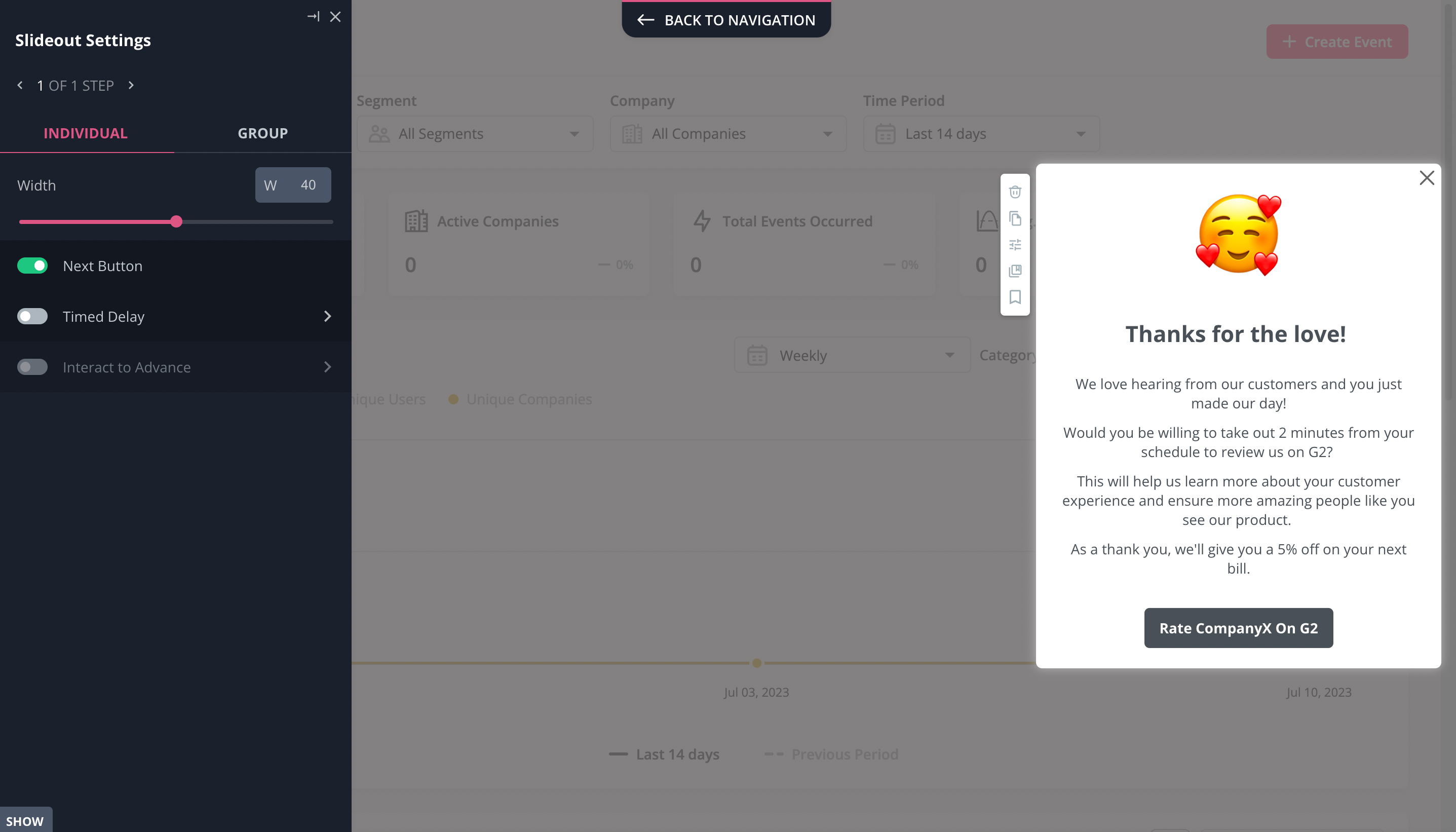
3. Segmentation based on customer loyalty
Customer loyalty segmentation is a great way to target your most loyal customers. One of the best ways to gauge customer loyalty is to see which users would be willing to refer your product or service to a friend.
This is exactly what the NPS metric tracks.
The net promoter score of a company is calculated by asking users how likely they are to refer your product or service on a scale from 1-10. Those who respond with a nine or 10 are promoters, those with a seven or eight are passives, and those with a six or lower are detractors.
If 50% of respondents said nine and 15% answered six or lower then your NPS score is 50 – 15 = 35.
Luckily, collecting NPS feedback is a lot easier than it used to be thanks to Userpilot and other software that can help you with your surveys.
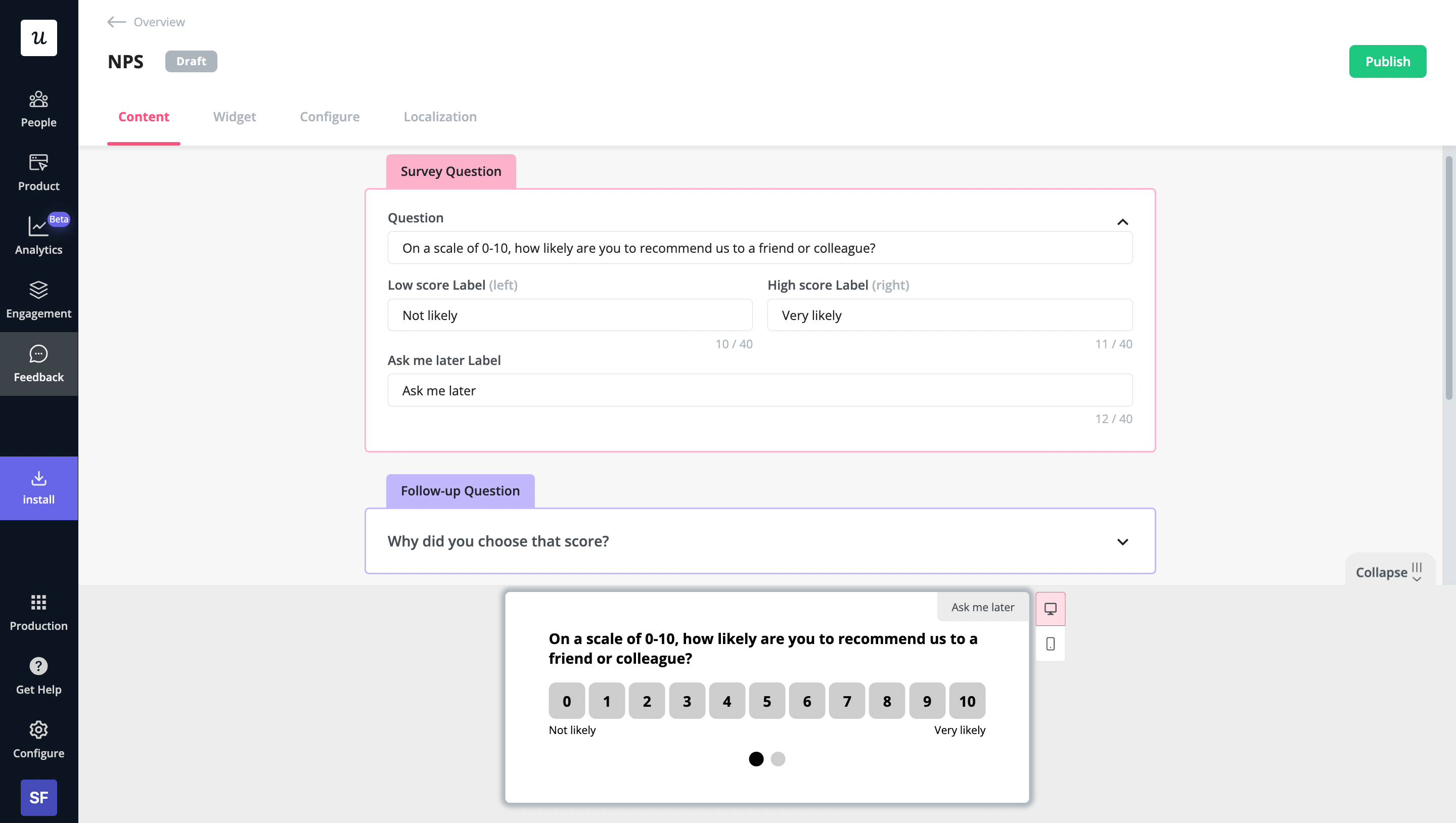
While NPS scores are a reliable measure of how high customer loyalty is, they can also reveal valuable insights on which features are working and which aren’t, through the qualitative follow-up question.
Some tools (Userpilot included) will allow you to tag specific responses and analyze how these relate to low or high NPS scores.
You can then use this data to reach out to detractors before they churn.

This type of behavioral segmentation also ensures your marketing messages are highly targeted to each viewer which can thus influence future customer behaviors when they interact with your product or service.
Segmentation based on customer satisfaction
In the same way that customer loyalty is a good basis for behavioral segmentation, customer satisfaction is also an essential part of grouping customers who use your product or service.
The two main metrics to consider when judging customer satisfaction are CSAT and CES.
CSAT is measured by running an on-the-spot customer satisfaction survey to see how they feel about a certain product, feature, or interaction.
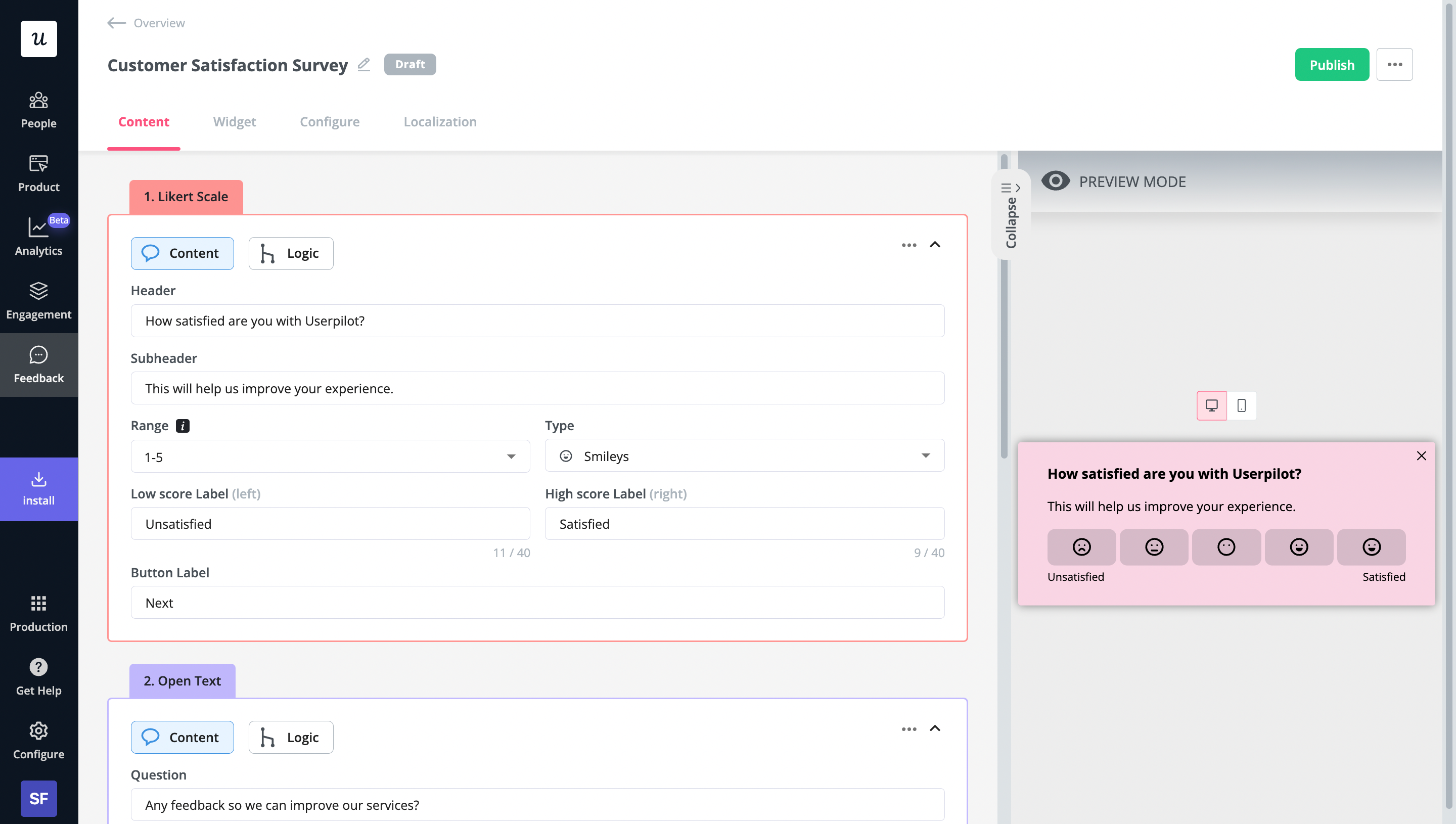
CES, on the other hand, measures the perceived effort of a customer when using a feature or performing an action in your product.
This could be customizing settings, upgrading to a new plan, or reaching a support agent when they run into a technical issue.
Convenience isn’t everything but having too much friction can reduce customer lifetime value since each action requires more effort. To avoid such issues, create behavioral segments that target users with poor CES scores then send them follow-up surveys to figure out what’s causing the friction.

Segmentation based on job-to-be-done
Behavioral data is most effective when you combine it with the job-to-be-done — the task the user is trying to accomplish or the benefits sought.
Behavioral data can help you grasp the end goal of your users and accomplish their JTBD as soon as possible.
Hastening activation, in turn, can lead to more positive purchasing behavior from your users. Customer loyalty behavioral segmentation is all well and good but it takes place after the fact.
Using the JTBD as your basis for behavioral segmentation can help you be more proactive instead of reactive.
There are many nuances to purchasing behavior but one thing that remains constant across the purchasing process of all users is the aim to receive value from the product. Even a simple item like toothpaste will have varying JTBDs for different user personas, so understand and fulfill each one.
In summary, letting the JTBD guide your behavioral segmentation and in-app messaging can make the user experience feel a lot more relevant for the user.
Speaking of personalization, let’s look at contextual onboarding and some other use cases for behavioral segmentation.
How to implement behavioral segmentation: examples and use cases
Let’s look into detail the different ways in which you can use behavioral segmentation for your marketing strategy and product experiences.
Personalizing the onboarding path with segmentation
Using an interactive walkthrough over a linear product tour is a good first step to optimizing the onboarding experience but that’s not where the story ends.
The next step should be making your onboarding flows as tailored and personalized as possible.
There are more complex welcome screens out there that ask questions about a user’s role and goals but even a simple microsurvey exploring the experience level of your new signups could work wonders.
ConvertKit is a great example of this.

Once you have responses, you can use the microsurvey data to customize the onboarding process, reduce churn, and streamline product adoption for the user.
For Convertkit, only if a user is moving from another tool it would make sense to offer customized data import.

Using behavioral segmentation as the foundation of your onboarding path will also lead more customers to upgrade after their AHA moment.
Build better products using segmentation
Seeing as behavioral segmentation makes it easier for you to evaluate the customer relationship with your product, it also provides the opportunity to get targeted feedback from your most loyal users.
Grouping customers from behavioral segments with positive KPIs is only the beginning.
After isolating them, ask them how they feel about the product and what changes they’d like to see. Happy customers are more likely to send highly-detailed and honest answers so focusing on those with positive behavior patterns will usually be the best path towards quality user feedback.
You should also offer an incentive to participate in these surveys such as a loyalty program that gives them access to beta features, or in-depth customer interviews.

You’d be surprised how many users are willing to share their thoughts on the product if they feel appreciated.
Besides, pre-launching features to your most loyal customers will be mutually beneficial since it gives you the chance to test it out before showing it to other customers in your user base who are more likely to churn.
You can also use discount modals to incentivize feedback.
Increase new feature adoption
In-app messaging can be a powerful driver of feature discovery but a lack of relevance can be its downfall.
However, behavioral segmentation solves that problem since you’ll now be able to promote new features to the behavioral segments that are most likely to use them.
Personalizing your messaging in this way ensures you won’t inadvertently promote new features to users if it doesn’t align with the benefits sought when they purchased your product.
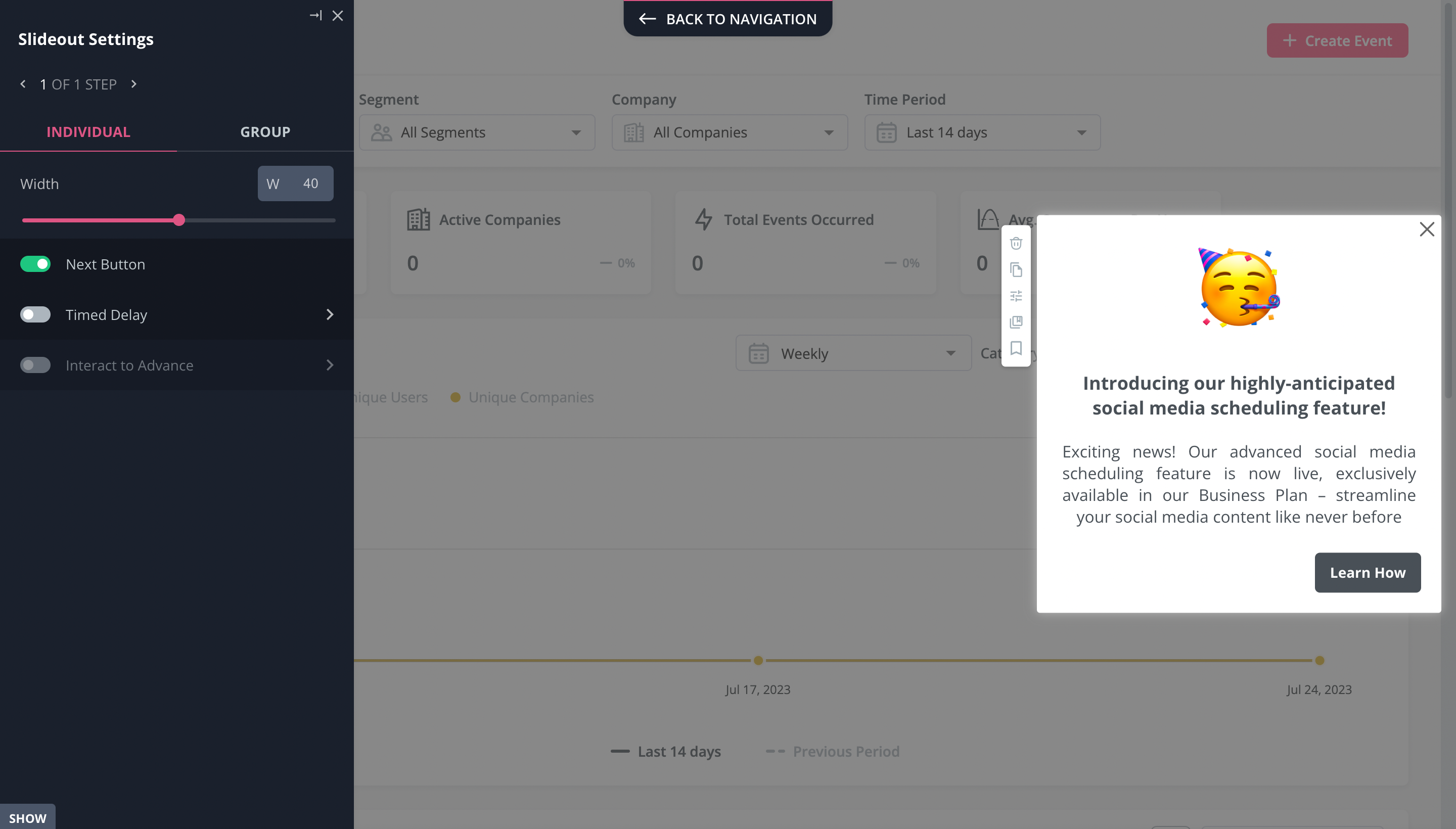
Convert freemium users to paid
We’ve covered a few examples of how behavioral segmentation can help your business but perhaps one of the most significant is its ability to boost your trial to paid conversion rate — a metric that many SaaS businesses struggle to raise.
While marketing segmentation isn’t the only consideration, being able to showcase relevant experiences and features to freemium users is a great way to increase upgrade rates since it helps users understand the value of your product.
At the end of the day, behavioral segmentation is an effective way to maximize feature discovery.
This is ideal since the number of features a user engages with is another element in the purchasing process, especially when they’re deciding whether or not to switch to a paid subscription.
You can also look at the data across multiple behavioral segments to see which areas of your product deliver the most value to your paid users — then offer free trials of those features to freemium users (or users on cheaper plans) so they have a reason to upgrade. Asana has used this method in the past.

Use behavioral segmentation data to understand why customers leave
Even loyal customers can change to new SaaS providers if they have sufficient reason to make the switch. Understanding their reason for leaving is essential to preventing further churn.
That being the case, you should look at single customer behavior for users who churn to get a clearer picture.
There are many cases where a user may be leaving because they saw a competitor with a feature you don’t have. Except, the problem is, you already have this feature too.
If you’ve experienced similar problems then you’re not alone.
Kommunicate received repeated requests for features that were already present on their platform. After looking into it, they found that 70% of their users were only using 3-4 aspects of their product.
Their customers weren’t exploring the product beyond its core features.
Because of this, they didn’t realize that the feature they needed was already there, didn’t fully grasp the true value of the product, and ended up churning as a result.
If you see high churn rates in a segment then look at which features they’re engaging with the least to diagnose the problem.
Kommunicate solved their problem by adding small cues in their product that lead users to features that correlate with conversion.
Creating these product experiments with Userpilot helped them take their signup-to-chatbot-integration rate from 40% to 60% in just seven months.

Read more about the Kommunicate case study
Adding an onboarding checklist increased the adoption rate by a further 4%.
Identify in-app activities that correlate with retention and increase LTV
Behavioral segmentation can help you segment users based on how long they’ve been using your product.
You can use this data to identify activities or features that correlate with high retention.
Is a particular segment using the feature more times per week after increased engagement with X feature?
If that’s the case, you’d want to encourage the same behavior in other user segments so you could start promoting it in your secondary onboarding flows. Complex products often have a dozen or more advanced features so knowing which ones to push can be extremely helpful.
You’ll know which features to include in onboarding checklists, announcement modals, and in-app guidance.
For example, BacklinkManager has “Assign targets” and “Add a task” on their secondary onboarding checklist since they know these features have a significant impact on retention.

Behavioral segmentation vs. personalization marketing
Behavioral segmentation and personalization marketing may seem like the same thing since they both emphasize the fact that you should tailor your messaging based on the behavior of your target audience to get better results.
However, they differ in their scope.
Behavioral segmentation groups your users based on their behavior patterns. It focuses on categorizing users rather than the strategies you’ll need to successfully promote to those behavior segments.
Personalization marketing centers around customizing your marketing to every individual. It combines customer data, automation, and sometimes artificial intelligence to make the user experience more memorable for your customers.
It’s the next logical step after you’ve implemented behavior segmentation but they aren’t one and the same.
One personalization marketing tactic you may have come across is addressing a recipient by name when running email marketing campaigns.
Outside of email marketing, there are also AI-powered tools that look at customer purchases to ascertain what they’re trying to accomplish with their tool stack and figure out which products to recommend.
How to improve behavioral segmentation and not get lost in data
So much data goes into behavioral segmentation like the average customer’s location, recurring personal occasions, and countless other metrics.
This makes it essential to filter out the noise so you can ignore data that doesn’t apply to your business goals.
Studying the rare personal occasions of a customer won’t make sense if you’re offering a software subscription since that type of data would only really be useful to a gifting company or those selling seasonal products.
What makes behavioral segmentation important is the ability to target customers so be sure to get rid of data that detracts from that.
Look at actions and events that have a direct impact on your bottom line and KPIs to ensure your team isn’t wasting time on vanity metrics or irrelevant data.
A few behavioral metrics that you should look at include:
- Time spent using the product per session
- Time to value
- Number of clicks
- Frequency of return
- Feature engagement
- Customer journey stage
Don’t be afraid to automate the process too.
AI isn’t going to replace your team but tools can help quantify customer journey data that humans would spend hours on or identify patterns in the benefits sought by users.
Conclusion
As you can see, behavioral segmentation is definitely worth investing in. It brings a myriad of benefits for your SaaS company to reap such as:
- Higher customer retention rates
- More frequent upgrades from free or low-paying users
- Feature discovery and adoption
- Reduced churn
- And more
Want to start segmenting your users based on how they interact with your product? Get a Userpilot demo today to see how your company can leverage behavioral segmentation to make customers stick around longer and pay more while they’re there!



